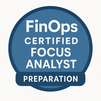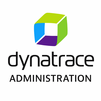
Master the end-to-end capabilities of Certinia PSA with this comprehensive training. Learn to manage project lifecycles, optimize resource utilization, automate billing, track time and expenses, and ensure accurate revenue recognition—all on the Salesforce platform. The course includes best practices for forecasting, compliance, and analytics. Designed for project managers, financial controllers, and PSA administrators, this training empowers professionals to enhance operational efficiency and profitability in services-driven organizations.
Certinia PSA Training Interview Questions Answers - For Intermediate
1. What is a Project Task in Certinia PSA and how is it used?
A Project Task in Certinia PSA represents a specific piece of work that needs to be completed within a project. Tasks can be organized hierarchically under project phases, and each task can have associated resources, start and end dates, estimated effort, and dependencies. Tasks drive project scheduling, resource assignments, and time tracking, helping ensure project milestones are met on time.
2. How do Approval Processes work in Certinia PSA?
Certinia PSA leverages Salesforce’s approval workflow engine to handle approvals for various records, such as timecards, expense reports, project change requests, and billing events. Approval rules can be configured based on business requirements, such as multi-level approvals or conditional logic. This ensures that only validated data moves forward in financial and project processes, improving governance and compliance.
3. Explain the relationship between Opportunities and Projects in Certinia PSA.
Certinia PSA allows users to create projects directly from Salesforce Opportunities. When an Opportunity reaches a certain stage (e.g., Closed Won), a project can be automatically generated with relevant details such as customer information, project scope, and key dates. This ensures alignment between sales and delivery, reduces manual data entry, and improves forecasting accuracy.
4. What is a Billing Event in Certinia PSA?
A Billing Event is a record in Certinia PSA that represents an instance of billable work or expenses ready for invoicing. It consolidates billable time, expenses, milestones, and fixed fees for a specific billing cycle. Billing Events streamline the invoicing process by ensuring that accurate and approved data is included in customer invoices, reducing billing errors and disputes.
5. How is Revenue Forecasting managed in Certinia PSA?
Revenue forecasting in Certinia PSA is driven by the combination of project progress, billing schedules, resource assignments, and backlog. The platform provides tools to model expected revenue based on current project data and pipeline information. This helps finance and leadership teams anticipate future cash flow, set revenue targets, and manage financial performance.
6. What are the key components of a Resource Request in Certinia PSA?
A Resource Request in Certinia PSA outlines the need for a particular type of resource (e.g., consultant, developer) for a project. It specifies details such as required skills, start and end dates, effort needed, and preferred location. Resource Managers review requests and assign the most suitable resources based on availability and fit, improving project delivery outcomes.
7. How does Certinia PSA handle Project Variance Analysis?
Certinia PSA provides tools for comparing planned versus actual project performance. Variance analysis helps project managers monitor deviations in budget, effort, timeline, and revenue. The system highlights areas where corrective action is needed and supports root-cause analysis to identify underlying issues. This drives more proactive project management and enhances profitability.
8. What is the purpose of Project Task Dependencies in Certinia PSA?
Project Task Dependencies in Certinia PSA allow users to define relationships between tasks, such as Finish-to-Start or Start-to-Start dependencies. These relationships ensure that tasks are scheduled logically and prevent work from starting prematurely. Dependencies help project managers build realistic project schedules and manage critical paths to meet delivery commitments.
9. How does Certinia PSA support Global Resource Planning?
Certinia PSA enables global resource planning by providing visibility into resource availability, skills, and utilization across geographies. It supports multi-time zone, multi-currency, and multi-entity operations, allowing organizations to efficiently allocate resources from a global talent pool. This capability helps optimize resource usage, control costs, and deliver consistent service across regions.
10. What is a Backlog Report in Certinia PSA?
A Backlog Report in Certinia PSA displays work that has been sold but not yet delivered or invoiced. It provides visibility into upcoming project revenue and delivery workload. Tracking backlog helps organizations manage delivery pipelines, align resource capacity with demand, and forecast revenue more accurately for future periods.
11. How does Certinia PSA facilitate Collaboration among project teams?
Certinia PSA, being built on Salesforce, integrates with tools like Chatter to facilitate real-time collaboration among project teams. Users can comment on project records, share updates, and tag team members to ensure timely communication. This improves transparency, fosters teamwork, and accelerates issue resolution during project execution.
12. Explain the role of Rate Cards in Certinia PSA.
Rate Cards in Certinia PSA define billing rates for different resource roles, services, or clients. They help standardize pricing for projects and ensure consistency in billing practices. Rate Cards can support variations by region, customer contract, or time period. They play a critical role in driving accurate revenue recognition and client invoicing.
13. What are Billing Forecasts and how are they generated in Certinia PSA?
Billing Forecasts in Certinia PSA estimate future invoice amounts based on project progress, resource assignments, and billing schedules. They help finance teams project cash inflows, manage working capital, and set expectations for client billing. Forecasts are updated dynamically as project data changes, providing up-to-date financial insights.
14. How are Multi-Entity Organizations managed in Certinia PSA?
Multi-entity organizations can manage projects across multiple legal entities or subsidiaries in Certinia PSA. The platform supports separate financial books, tax configurations, and intercompany billing processes. This allows global organizations to maintain financial control, meet regulatory requirements, and consolidate reporting across diverse business units.
15. How does Certinia PSA handle Audit and Compliance requirements?
Certinia PSA supports audit and compliance through robust data controls, approval workflows, and audit trails on key records such as timecards, expenses, and billing events. Role-based access controls ensure data privacy, and the platform’s alignment with accounting standards like ASC 606 helps organizations maintain financial compliance. These features are critical for audit readiness and regulatory reporting.
Certinia PSA Training Interview Questions Answers - For Advanced
1. How does Certinia PSA enable proactive management of project risk, and what tools are available to identify and mitigate risks?
Certinia PSA provides several tools to help project managers proactively identify, monitor, and mitigate project risks. Key among these are real-time project health dashboards, variance analysis, and forecasting tools. PSA tracks key performance indicators (KPIs) such as schedule adherence, budget variance, resource utilization, and milestone completion. Early warnings can be set up for deviations from baseline plans, enabling managers to take corrective actions. Additionally, PSA supports the tracking of project issues and change requests, providing visibility into emerging risks. By combining operational data with historical trends and predictive analytics, PSA helps organizations identify systemic risks (such as resource constraints or chronic scope creep) and implement mitigation strategies. Effective risk management drives better project outcomes, improves client satisfaction, and protects margins.
2. What is the role of project hierarchies and multi-level project structures in Certinia PSA, and how do they support complex delivery models?
Certinia PSA supports multi-level project structures, allowing organizations to model complex delivery hierarchies such as programs, sub-projects, and workstreams. Project hierarchies enable project managers to break down large engagements into manageable components, each with its own budgets, schedules, resources, and deliverables. This approach improves project governance by allowing different teams to manage their respective areas while maintaining visibility at the program level. Financial roll-ups aggregate costs and revenue across the hierarchy, supporting consolidated reporting. Multi-level structures are essential for organizations delivering large-scale, multi-phase, or multi-region projects, as they enable clear accountability, better resource allocation, and granular financial control.
3. How does Certinia PSA support contract compliance and management of project scope against contractual obligations?
Certinia PSA offers features that help organizations ensure compliance with customer contracts and manage project scope effectively. Contractual terms such as billing milestones, rate cards, expense policies, and deliverables can be configured within PSA and linked to specific projects. Scope management is supported through change request workflows, which capture and approve any deviations from the original contract. Time and expense tracking is governed by project-specific rules, ensuring that billable work aligns with agreed terms. PSA also provides audit trails for approvals and changes, supporting regulatory compliance and dispute resolution. These capabilities protect revenue integrity and maintain client trust by ensuring transparent and contract-compliant project delivery.
4. Describe how scenario modeling in Certinia PSA helps executives with strategic decision-making.
Scenario modeling in Certinia PSA enables executives to simulate the impact of different business decisions on future financial and operational performance. For example, managers can model changes in resource capacity, pricing strategies, project pipelines, or contract terms and immediately see the projected effects on revenue, utilization, margins, and cash flow. By using "what-if" analysis, leadership teams can evaluate the risks and rewards of various strategic options, such as entering new markets, adjusting service offerings, or shifting delivery models. PSA’s ability to provide real-time, data-driven scenarios enhances agility and helps executives make informed, forward-looking decisions in a dynamic services landscape.
5. How does Certinia PSA facilitate alignment between sales and service delivery teams?
Certinia PSA’s tight integration with Salesforce CRM enables seamless alignment between sales and service delivery. When opportunities progress through the sales funnel, delivery teams gain early visibility into upcoming work. Projects can be automatically created from opportunities, ensuring that project scope, timelines, and financial expectations are accurately captured from the start. This reduces disconnects between what is sold and what is delivered. Additionally, PSA enables collaborative forecasting, allowing resource managers to prepare for future demand. Regular feedback loops between sales and delivery teams are supported through shared dashboards and KPIs. This alignment results in more accurate project scoping, better resource planning, and a smoother client experience.
6. How does Certinia PSA support compliance with global accounting standards such as ASC 606 and IFRS 15?
Certinia PSA has robust capabilities to support compliance with global revenue recognition standards such as ASC 606 and IFRS 15. It allows organizations to define performance obligations, allocate transaction prices across those obligations, and recognize revenue as obligations are satisfied. PSA tracks project milestones, time-based progress, and percentage of completion, aligning revenue recognition with actual project delivery. The system can handle variable consideration, contract modifications, and bundled services, all of which are common in services contracts. Detailed audit trails and integration with ERP systems ensure that recognized revenue is accurately reflected in financial statements. This functionality is critical for public and global companies that must comply with rigorous accounting requirements.
7. What is the importance of skills-based resource management in Certinia PSA, and how does it improve project outcomes?
Skills-based resource management in Certinia PSA enables organizations to allocate the best-fit resources to each project based on competencies, certifications, experience, and availability. PSA maintains detailed resource profiles, including primary and secondary skills, language proficiency, and project history. When creating resource requests, project managers can specify required skills, and PSA suggests matching resources. This approach improves project outcomes by ensuring that resources possess the necessary expertise for the work, which leads to higher quality delivery and greater client satisfaction. Additionally, skills-based planning supports career development by aligning resources with opportunities that build on their strengths, improving employee engagement and retention.
8. How does Certinia PSA enable advanced billing models such as usage-based, subscription-based, and outcome-based billing?
Certinia PSA supports a wide range of advanced billing models beyond traditional time-and-materials and fixed-fee contracts. Usage-based billing allows organizations to charge clients based on actual consumption of services, such as API calls or hours used, with automated tracking and billing. Subscription-based billing enables recurring invoicing for ongoing services, with flexible terms such as monthly, quarterly, or annual billing. Outcome-based billing links revenue to the achievement of defined results or KPIs, supporting performance-driven engagements. PSA’s flexible billing engine allows these models to be configured at the project or contract level, with automated generation of billing events and revenue recognition aligned to each model. This flexibility supports innovation in service offerings and helps organizations compete in modern service markets.
9. How does PSA drive continuous improvement in services organizations through advanced analytics?
Certinia PSA empowers services organizations to drive continuous improvement by providing advanced analytics that track key performance indicators across the project lifecycle. Dashboards can highlight trends in utilization, project margins, customer satisfaction, delivery cycle times, backlog health, and forecast accuracy. Root-cause analysis identifies recurring issues such as scope creep, staffing bottlenecks, or profitability leakage. By embedding a culture of measurement and accountability, PSA helps organizations implement targeted process improvements. Over time, this results in more predictable delivery, higher customer satisfaction, and improved financial performance. Continuous improvement driven by data is a key competitive advantage for mature services organizations.
10. How does Certinia PSA support partner and subcontractor management in complex project ecosystems?
Certinia PSA enables effective management of partners and subcontractors through features such as external resource records, rate card management, and time and expense tracking. Subcontractors can be onboarded into the system with limited access to log time and expenses against projects. Their costs are tracked separately for financial transparency. PSA supports differentiated billing rates and revenue recognition for subcontracted work. Additionally, project managers can monitor subcontractor performance using the same KPIs and dashboards as internal resources. This visibility is crucial in complex project ecosystems where multiple delivery partners must be coordinated. Proper management of partners helps ensure project quality, financial control, and client satisfaction.
11. How does Certinia PSA enhance client transparency and collaboration during project delivery?
Certinia PSA enhances client transparency by providing tools to share project status, deliverables, time and expense reports, and billing summaries with clients. Client-facing dashboards and portals (often built using Salesforce Communities) allow customers to track progress in real time. Regular reporting cycles can be automated to provide clients with consistent updates. Transparent communication builds trust, reduces disputes, and improves the client experience. PSA also facilitates collaboration through integrated Chatter and document management, allowing project stakeholders (both internal and client-side) to communicate and share knowledge within the project workspace. This fosters a more collaborative and value-driven client relationship.
12. What are key success factors when transitioning from legacy PSA systems to Certinia PSA?
Transitioning from legacy PSA systems to Certinia PSA requires careful planning to ensure business continuity and adoption. Key success factors include conducting a thorough business process review to align PSA configurations with future-state workflows, cleansing and migrating high-quality data, and integrating PSA with the broader enterprise ecosystem (CRM, ERP, HR). Strong executive sponsorship and clear communication of the transformation’s benefits are critical for driving change. Training programs should be role-based and focus on demonstrating how PSA will improve daily work for users. A phased rollout with a pilot group can help refine processes before broader deployment. Post-go-live support and continuous improvement initiatives ensure long-term success.
13. How can Certinia PSA support revenue diversification strategies in a professional services organization?
Certinia PSA enables revenue diversification by supporting a wide range of service offerings and billing models. Organizations can expand into new markets such as managed services, subscription-based offerings, outcome-based engagements, or productized services. PSA’s flexible project, resource, billing, and revenue recognition capabilities make it easy to model and operationalize new business lines. Integrated forecasting helps leadership understand how diversification impacts financial performance and resource planning. Analytics track profitability and growth across different service lines, informing strategic investment. By enabling operational agility, PSA supports innovation in services and helps organizations adapt to changing market dynamics.
14. How does PSA support a culture of resource empowerment and engagement?
Certinia PSA fosters resource empowerment by providing visibility into project assignments, skill development opportunities, and career progression. Resources can view their schedules, project roles, and utilization metrics. Skill profiles are maintained and used to match resources to projects that align with their interests and goals. PSA supports transparent feedback loops through performance tracking and project retrospectives. Employees feel more engaged when they understand how their work contributes to project and organizational success. Additionally, PSA’s mobile capabilities give resources flexibility to manage time, expenses, and collaboration on the go, further enhancing their experience. A culture of empowered resources leads to higher morale, better retention, and improved project outcomes.
15. How does Certinia PSA support strategic workforce planning in dynamic service environments?
Certinia PSA plays a key role in strategic workforce planning by providing visibility into future resource demand based on sales pipeline, backlog, and project forecasts. Resource managers can analyze capacity versus demand across roles, skills, and geographies. PSA identifies potential talent gaps, informing hiring and training strategies. It also supports scenario planning to model the impact of market shifts, new offerings, or geographic expansion. This proactive approach helps organizations maintain an optimal balance of supply and demand, ensuring readiness to capitalize on new opportunities while controlling costs. In dynamic service environments, strategic workforce planning enabled by PSA is a key enabler of agility and sustainable growth.
Course Schedule
| Dec, 2025 | Weekdays | Mon-Fri | Enquire Now |
| Weekend | Sat-Sun | Enquire Now | |
| Jan, 2026 | Weekdays | Mon-Fri | Enquire Now |
| Weekend | Sat-Sun | Enquire Now |
Related Courses
Related Articles
Related Interview
Related FAQ's
- Instructor-led Live Online Interactive Training
- Project Based Customized Learning
- Fast Track Training Program
- Self-paced learning
- In one-on-one training, you have the flexibility to choose the days, timings, and duration according to your preferences.
- We create a personalized training calendar based on your chosen schedule.
- Complete Live Online Interactive Training of the Course
- After Training Recorded Videos
- Session-wise Learning Material and notes for lifetime
- Practical & Assignments exercises
- Global Course Completion Certificate
- 24x7 after Training Support











 Join our Live Instructor-Led online classes delivered by industry experts
Join our Live Instructor-Led online classes delivered by industry experts